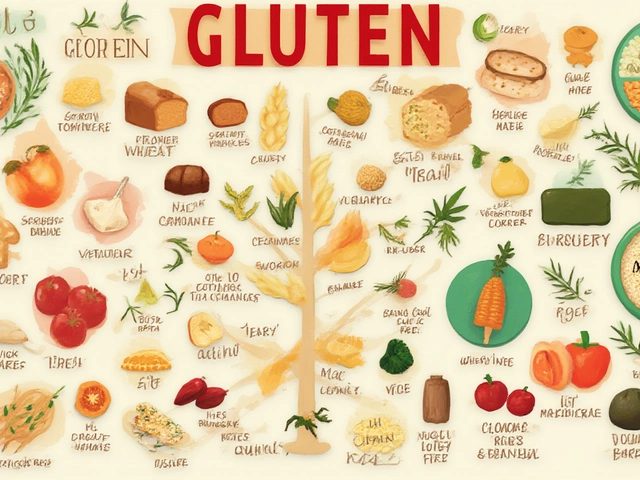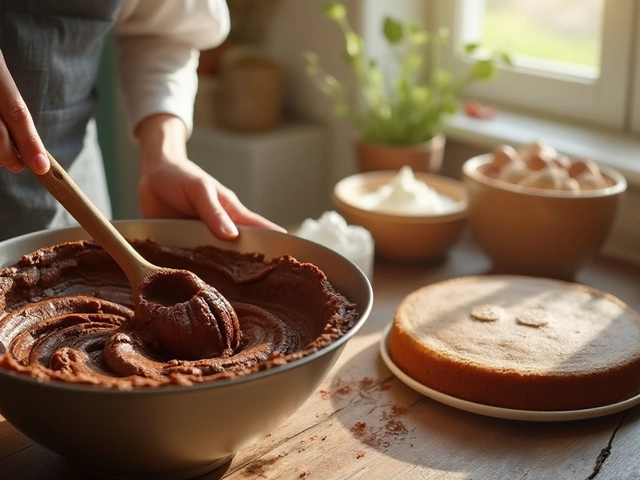
Macarons, with their vibrant hues and exquisite flavors, have garnered quite the reputation as both a culinary wonder and a delicate dessert. For many, they are an occasional treat, hard to resist once you start indulging. But what if you've found yourself with an excess batch? Can you safely store them by freezing, and keep their magic intact?
Surprisingly, freezing macarons is not only possible but can be quite effective when done right. These delightful confections can indeed weather the chill of your freezer with a little care and knowledge. By following a few essential methods and tips, you can ensure that your macarons remain as mouthwatering as the day they were crafted.
- Understanding the Delicate Nature of Macarons
- The Proper Method for Freezing Macarons
- Thawing and Enjoying Frozen Macarons
- Additional Tips for Preserving Macaron Freshness
Understanding the Delicate Nature of Macarons
Let's take a moment to admire the marvel that is the macaron. These elegant little pastries with their glossy, smooth top and chewy interior filled with ganache, buttercream, or jam are a true testament to culinary artistry. Yet, their beauty is matched by their delicacy. The macaron's shell, made from a precise blend of almond flour, egg whites, and sugar, is prone to cracking under the slightest mishandling. Suffice to say, perfecting them is a noble endeavor in the baking world. While many of us can relate to the trials of achieving that ideal texture—a crisp shell yielding to a tender heart—it's important to acknowledge just how temperamental these creations can be.
Diving deeper into their composition helps us understand the potential fragility when considering storing macarons. The ingredients that give macarons their unique characteristics demand a particular level of attention, especially when discussing storage methods like freezing. For instance, the ideal macaron should age in refrigeration for a day to merge flavors seamlessly before serving, a process known as "maturation." This essential step is a testament to the need for moisture balance within the bake, and the freezing process might just tip this balance off if not executed correctly.
"Creating the perfect macaron is akin to conducting a delicate symphony of flavors and textures," remarked pastry chef Pierre Hermé, often hailed as the Picasso of Pastry, highlighting the finesse required in both crafting and preserving these petite masterpieces.
Given their fragile nature, storing macarons demands care—not unlike handling a masterpiece. Their texture is thanks to the interplay of the crust and the meringue-like interior, with the filling adding extra complexity. This distinctive duo of textures can quickly devolve into an unappetizing mush if exposed to improper storage, humidity, or abrupt temperature changes. The shell, while sturdy at a glance, can readily absorb moisture, leaving what was once a feathery bite into something undesirably chewy. Therefore, understanding the science behind the macaron becomes the first step in ensuring their preservation, which is where the art of freezing comes into play as both an opportunity and a challenge.
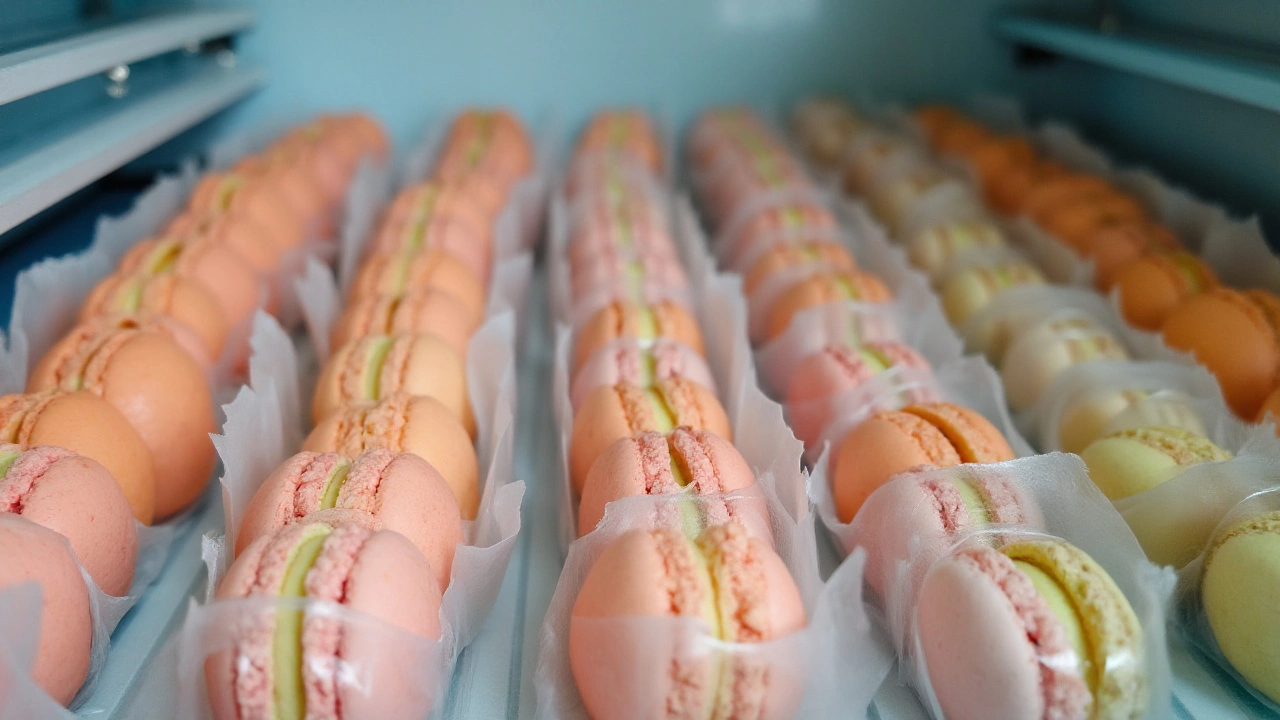
The Proper Method for Freezing Macarons
Macarons are a delicate balance of crisp, chewy, and tender, and when it comes to storing these delightful creations, particular care must be taken. Freezing macarons, though initially daunting, can be mastered with the right steps, preserving their integrity. To start, always ensure that your macarons are perfectly mature; this means letting them sit for at least 24 hours after baking and filling. This resting period allows the filling to meld with the meringue, creating that sought-after harmony of texture. Rushed freezing might trap excess moisture, which could lead to sogginess upon thawing.
The key to successfully freeze macarons is to work with both the shells and filled macarons. When freezing solely the shells, allow them to cool completely post-bake, ideally on a wire rack. Once cooled, place them in single layers on a baking sheet and freeze for an hour to firm up. Once firm, carefully transfer them into an airtight container, layering parchment paper between stacks to avoid sticking. If you're freezing filled macarons, a similar method applies. Single layer freeze them first, then stack with parchment, ensuring no shell touches another directly. An essential tip: double wrap your container in plastic after sealing to ward off any odors that might emanate from the freezer.
Understanding the science behind freezing is critical to maintaining texture. Key to this is rapid freezing, as slower freezes can create larger ice crystals, potentially damaging the macaron's architecture. If you have the luxury of a rapid freeze setting or flash freezer, use it! But worry not if you don’t; doing all you can to keep their environment airtight will help counteract this. A seasoned pastry chef once said, “The freezer should be approached as cautiously as a hot oven; both are capable of creating perfection or calamity.”
For those skeptical about the integrity of a thawed macaron, know that many professional bakers use this technique to prolong the shelf-life of their batches, especially with delicate flavors prone to fading like rose or lavender. A special note: macarons can generally be stored frozen for up to a month without losing flavor or texture, offering peace of mind for those planning ahead for events. Consider this approach not just as preservation, but a way to savor those whimsical, store macarons whenever the fancy strikes.
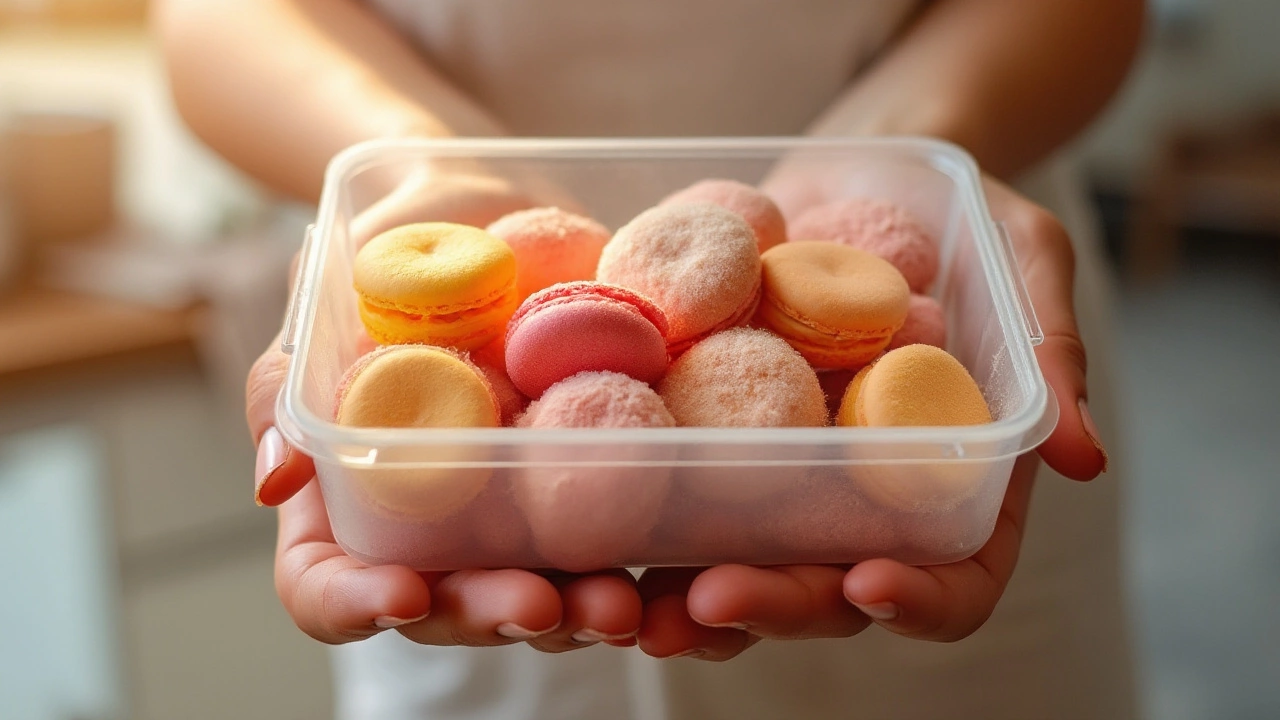
Thawing and Enjoying Frozen Macarons
Once you've managed to successfully freeze your precious macarons, the next step is equally crucial – thawing them just right to savor their intricate texture and taste. The first thing to remember when you're ready to enjoy these treats is patience. It might be tempting to dive right in, but proper thawing is key to maintaining that delicate crunch, followed by the signature chewy center, which we've all come to adore in a well-made macaron. Start by removing your frozen macarons from the freezer and allowing them to sit at room temperature.
When thawing, avoid placing them under direct sunlight or in a warm oven, as this can cause the delicate meringue shells to sweat. This moisture, though seemingly harmless, can turn your once crisp macaron shells into a soggy disappointment. Instead, opt for a slow thaw at room temperature, which generally takes about 30 minutes to an hour, depending on the humidity and ambient temperature. This gradual return to optimum temperature allows each component of the macaron to adjust, harmonizing the flavors and textures perfectly for your taste buds.
Interestingly, frozen macarons retain their flavor profiles quite well, which is why their consumption after thawing feels much like having them fresh. This is due to their high sugar content acting as a preservative, aiding in flavor preservation. According to renowned pastry chef Pierre Hermé, "Macarons, when properly made, possess an extraordinary resilience even when frozen." This resilience is where their beauty lies, allowing you to enjoy batches of these beautiful sweets on a whim, without compromising on quality.
For those wondering about presentation, there's no need to worry. Macarons, even thawed, keep their visual appeal. Their distinct colors remain vibrant, and their petite, elegant structure stays intact, ready to be the star of any dessert table. To serve, you might consider pairing them with complementary flavors. A dollop of fresh whipped cream, a sprinkle of crushed pistachios, or even a delicate tea can elevate your macaron experience to new heights, making them the showpiece of your culinary repertoire.
If you're planning to thaw a large batch for an event or party, it's best to lay them out on a flat surface with ample space between each piece. This practice ensures even thawing, while also protecting the delicate shell from accidental damage. By allowing them enough space, the air circulates freely around each macaron, helping to maintain their perfect structure. It's these little adjustments in our routines that can make all the difference, converting common baking trials into triumphs that get remembered.
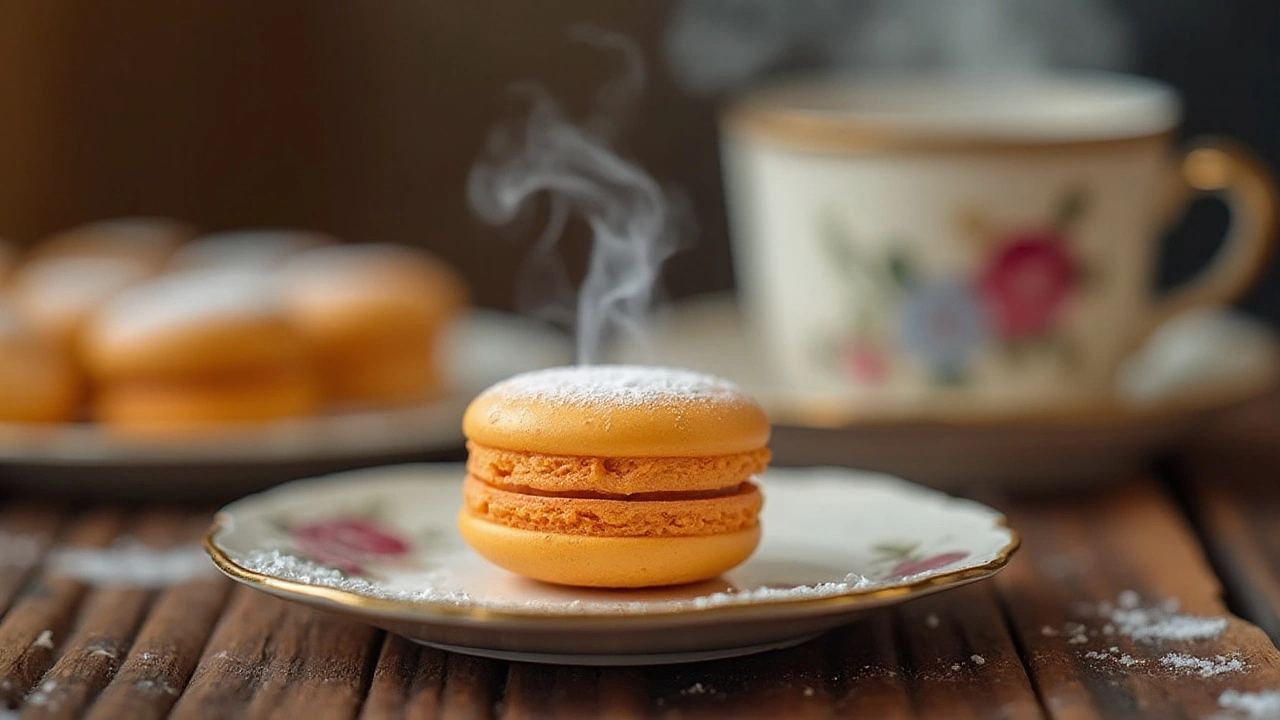
Additional Tips for Preserving Macaron Freshness
Preserving the freshness of macarons is a task that demands attention to detail, akin to nurturing a delicate flower. Macarons, with their perfect blend of soft interiors and slightly crisp shells, can be easily affected by moisture changes and temperature fluctuations. It's fascinating how such a small confection can hold such a complex need for care. Ensuring the longevity of their delightful texture and flavor involves simple yet critical steps that even home-bakers can master. The journey of mastering this art makes you appreciate each bite even more.
Start by storing macarons in an airtight container, one that leaves no room for error in its sealing. The container acts as a protective envelope, shielding your macarons from humidity changes that might seep in and disrupt their crisp exterior. Inside the container, arrange the macarons in a single layer, avoiding the urge to stack them as this could lead to unwanted pressure on their fragile bodies. Some enthusiasts recommend adding a layer of parchment paper between layers if stacking is unavoidable, providing a buffer that helps maintain their delicate stature.
Many bakers swear by keeping macarons in the fridge after storing them in the airtight container. This technique helps slow down aging and preserves their unique texture for a longer time. However, it's crucial to let the container sit at room temperature for about 20 minutes before indulging in them. This allows the macarons to reach the perfect consistency, where the shell is slightly crisp, yet the center provides a melt-in-your-mouth contrast. Leaving them in the fridge means you can also prolong their lifespan if you don't plan to enjoy them all at once.
Interestingly, while it might sound counterintuitive, macarons often taste better a day or two after baking. This phenomenon, akin to magic, occurs because storing them allows the flavors to mature and meld together more harmoniously. Therefore, consider making your macarons in advance when planning events or gatherings, letting time be your silent ally in enhancing taste. It's not just about preservation; it's about creating a symphony of flavors that resonate deeper with every moment they rest.
"The macaron is our humble attempt at capturing sweet perfection. Allowing them to linger in storage shouldn’t diminish their beauty but rather enhance the ephemeral experience." — Pierre Hermé, Renowned French Pastry Chef
Finally, it's essential to remember that homemade macarons have different storage needs than commercial ones, often due to the lack of preservatives in homemade versions. This is an advantage in terms of flavor and health benefits, prompting the need for more methodical storage practices. Yet, don't let this deter you; instead, see it as embracing the old-world methods of caring deeply for things crafted with heart and tradition.
To summarize the best practices for storing and preserving macarons, here’s a handy list:
- Use an airtight container to protect against humidity.
- Store in single layers or separate stacked layers with parchment paper.
- Refrigerate for longer freshness, remembering to let them reach room temperature before serving.
- Make a couple of days in advance to let the flavors develop.
- Appreciate the charm of homemade freshness versus commercial longevity.
By following these simple steps, you hold the key to savoring these beloved French confections at their finest, ensuring every bite is as enchanting as the vision of Paris that first inspired them.


